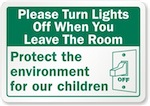Our plan? To attack the leaky building envelope using a “curtain wall” approach. On the old roof and exterior walls we added 2×3 studs, on edge, with 4″ screws directly over the old siding and roof shingles. Then I sprayed “do-it-yourself” spray foam insulation into the cavities. After that, we installed sheathing, house wrap, and engineered wood siding and trim on the walls, and radiant barrier sheathing, underlayment, and a combination of recycled rubber faux slate shingles and white rubber membrane on the roof. Then we replaced all of the old rotting, single-pane windows with triple-pane, krypton gas filled models. The old wooden doors were replaced with insulated fiberglass doors. We replaced the rotting garage with a slightly larger, super-insulated structure with an insulated slab foundation. All of the envelope improvements gave us R-30 walls and an R-50+ roof, all completely air-sealed with the expanding spray-foam insulation.
With the house so tight, we installed an Energy Recovery Ventilator, which exhausts dirty stale indoor air and brings in fresh outdoor air while keeping 95% of the energy we’ve used to heat or cool that air inside the house. The ERV gives us healthier, more comfortable indoor air quality without losing energy to the outdoors.
Over time we had been replacing our appliances as they failed. We now use a front-loading washer, high-efficiency dishwasher, tankless water heater, and Energy Star or better appliances everywhere else. As incandescent lights had failed, we’d replaced them with CF and LED lighting. Every little bit counts, and our “little bits” were adding up.
Since we’d “eaten our vegetables” by attacking our energy efficiency, we were able to “have dessert” in the form of solar energy. We took advantage of renewable energy incentives at the Federal & State level to add a 4kW solar array to produce nearly all of our electricity. In addition, by selling the “SRECs” (Solar Renewable Energy Credits) to a regional broker, we were able to bring the cost of the system down from $32,000 to $8,000 – the system will easily pay for itself in under 10 years.
The result? Even with the DER only about 80% complete, we cut our heating costs by 2/3 last winter – even though we had the coldest winter in years AND I turned up the heat to 70F to keep us more comfortable in our super-tight house. Our electric bills are small or non-existent, and we get credits from our grid-tied system during the summer months. And if energy prices rise? We’re covered.







